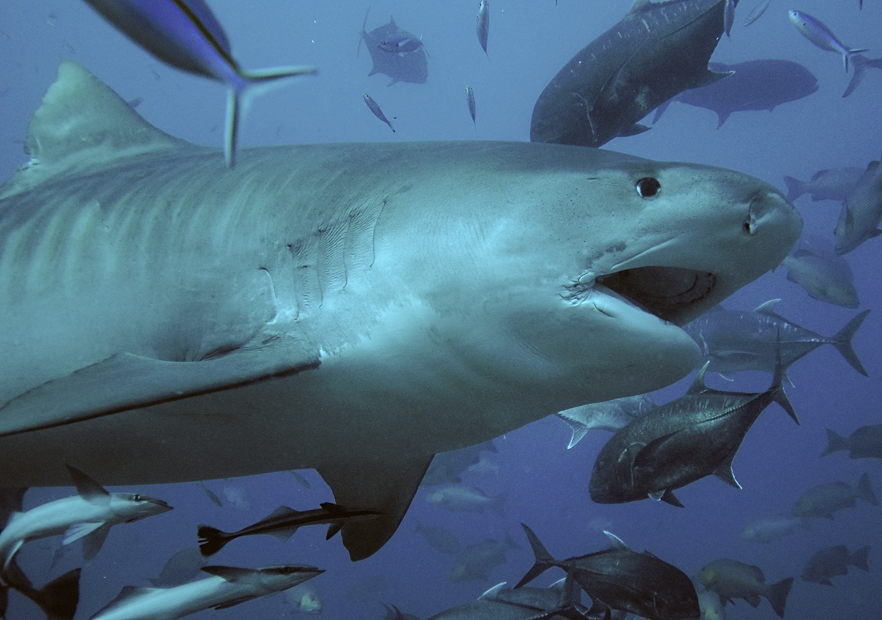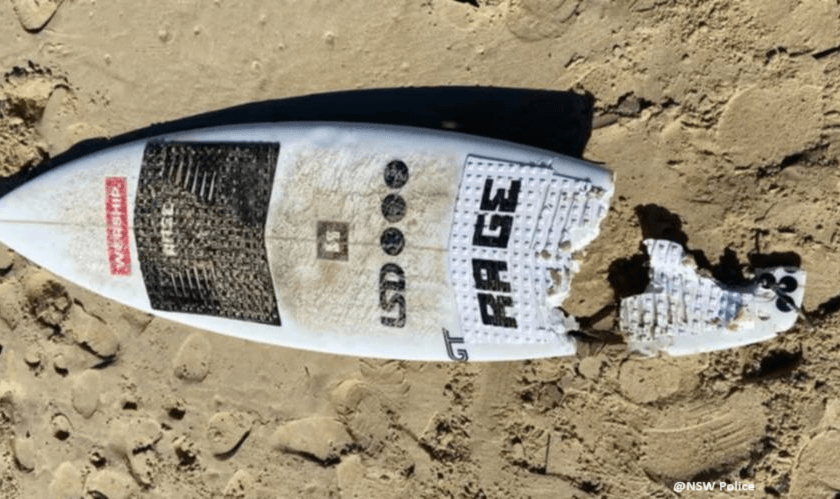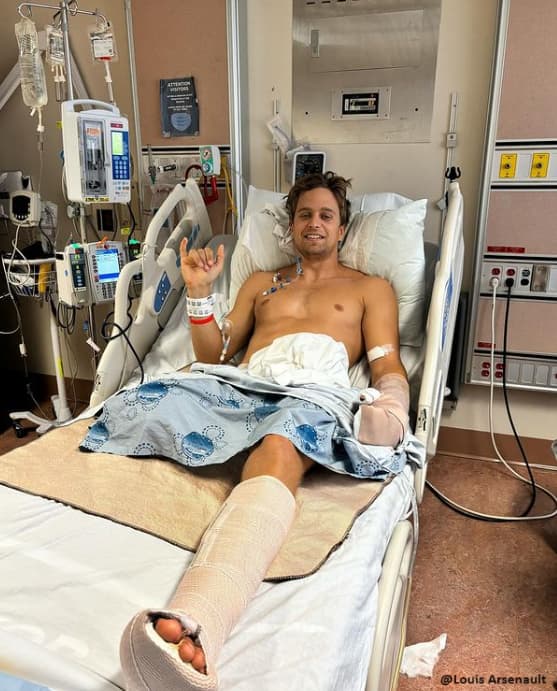Jimi Partington of Shark Diving Xperts was recently featured on the Shark Week episode Great White Serial Killer Lives. In one of the week’s most harrowing moments, Jimi reached out to move a curious great white shark away from a platform and got a very close look inside the shark’s mouth.
We reached out to ask him what it was like to be part of Shark Week, and find out how close he really came to losing his arm.
First, I have to ask, what’s up with the title Great White Serial Killer?
The title of the show originates from the original show “Great White Serial Killer” which was the first in this mini franchise produced by acclaimed filmmaker Jeff Kurr. The show compared Great White shark behaviour to that of real life serial killers and was inspired by a scientific paper written by shark expert Dr. Neil Hammershlag.
Although, at no point in the show were Great White sharks called serial killers, there were many comparisons in behaviour as far as how they hunt, stalk and select their prey. It’s a fascinating concept.
Agreed, it is interesting to see how great whites hunt, and the show had some great information on how whites travel after having their young and, of course, the DNA testing.
What was it like filming with the shark week crew?
Working with the shark week crews is a dream come true for me. As a boy, I used to be in awe of the filmmakers creating these shows. Over the years we have built up a solid relationship based on respect, knowledge, hard work and professionalism. When interacting and filming with any kind of wildlife, our priority is always the respect of the animals and the filmmakers I have collaborated with share this belief.
Speaking of protecting the sharks, in the show you talk about touching the shark’s snout to protect it from the cage. Can you explain the theory behind the touch?
Prior to working at Guadalupe Island, I used to work with shark expert Chris Fallows out of South Africa. Chris’ boat had outboard engines and the sharks would often be attracted to them, picking up on the small electrical current running through them.
Great White sharks are very curious creatures and would then explore the engines with their mouths. Not wanting the sharks to get injured on the equipment we found that a slight touch to the snout and redirection was enough to veer the shark away and keep it safe from harm. The same went for the cages; we do not want any sharks to harm themselves when interacting with them.
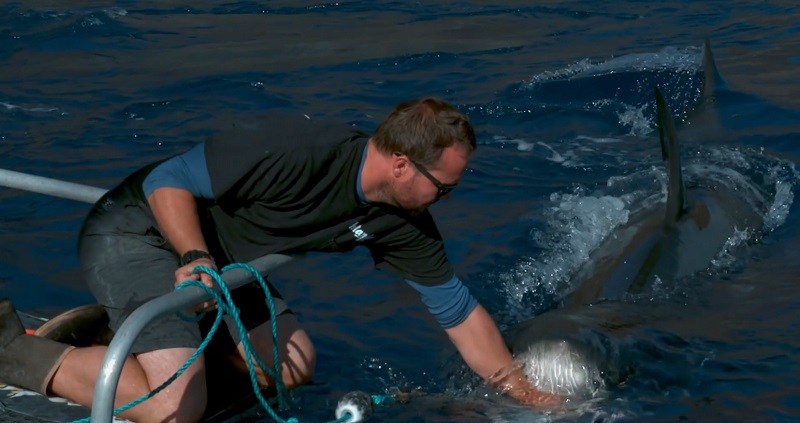
It looked like the shark was quite mad when you touched it and displayed some posturing. Is that normal?
All Great White sharks are different from one another. They display various personalities, just like if you touched ten different dogs on the nose, you would most likely get 10 different responses. Some calm and some more excitable.
When this interaction takes place, the sharks are never being aggressive, just responding automatically to the touch as all their senses are around the snout area. It can look very impressive having a shark gape showing you its pearly whites just inches from you!
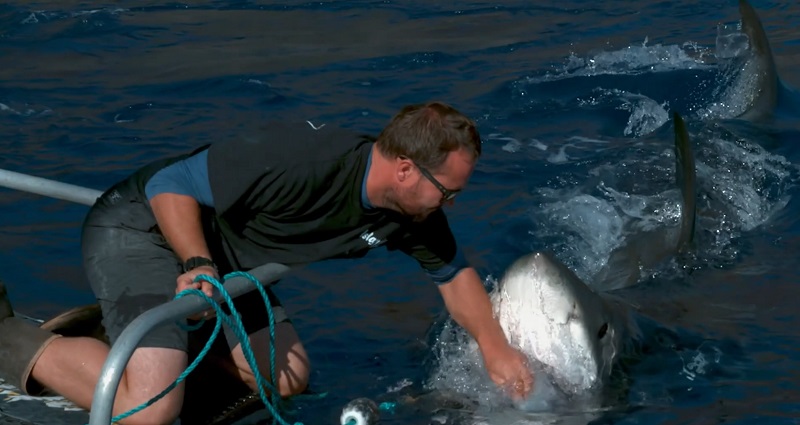
The second time we saw you touch the shark, it looked like you almost lost your arm? Was that a slip up? How close were you to getting bit?
I have been working with these creatures for a long time and am able to read shark behaviour in these moments. I am not a reckless character; in fact, I am very calm during these interactions.
I have had some close calls but I would always state that if anything happened it would never be the fault of the shark; at no point is it trying to eat me. With knowledge of the animal and their behaviours and by knowing our own limits we have been able to capture this subtle behaviour safely and respectfully.
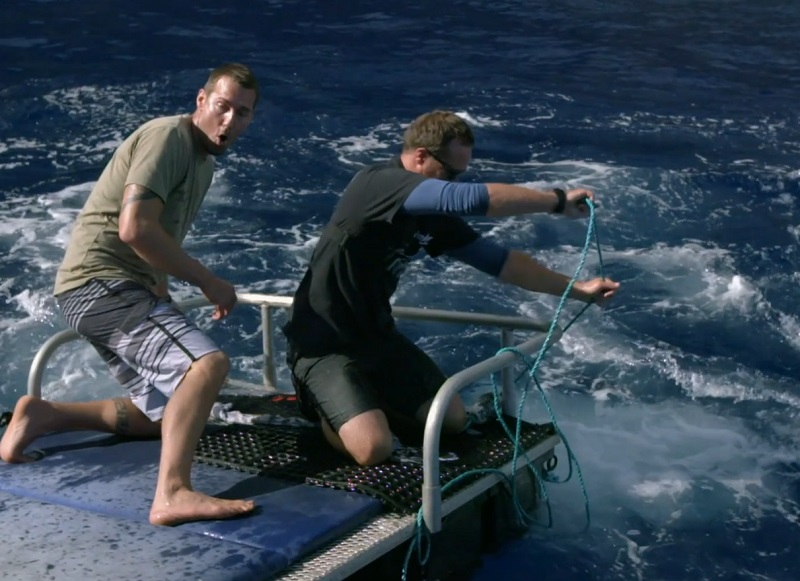
The look on your partner’s face was priceless!!
Brandon McMillan was alongside me for that particular moment and I just loved his reaction! Brandon has worked with many large predators including lions, tigers and grizzly bears but I think even he got a bit of a shock seeing that shark rear out of the water right in front of him!
That was a great expression. Is it safe for anyone to touch a shark’s snout? Would you do it again?
I would definitely not recommend “trying this at home,” as the saying goes, unless you are very experienced in the field. As mentioned, because of each shark having such varied personalities, it takes a long time interacting with enough of them to see all these different traits. I have spent a good portion of my life watching and observing these characters, and allows me to make calculated decisions based on my knowledge. When attempting anything that could lead to a dangerous situation with sharks you also need to have the mind set to know when to say “no.”
I agree with you. Once misstep and a novice could be in a world of hurt. What should viewers take away from the episode?
The episode concludes a fascinating true story that has been going on for almost a decade. Yes, it features shark attacks but these events really happened, and I’m always a believer in learning from your experiences.
The science featured in the show has helped us and the public gain a deeper understanding of shark behaviour. The more we learn, the more we can help protect the sharks and educate the public. Jeff Kurr has created a beautifully produced, real life drama with cutting edge science and modern film making. It was a pleasure being part of it.
Tracking Sharks would like to thank Jimi for taking the time to speak with us.
You can find more information on his research and all-inclusive Guadalupe dive trips at Sharkdivingxperts.com. We first met Jimi while researching the article Gums: the toothless great white shark, which was photographed on one of Jimi’s trips.
